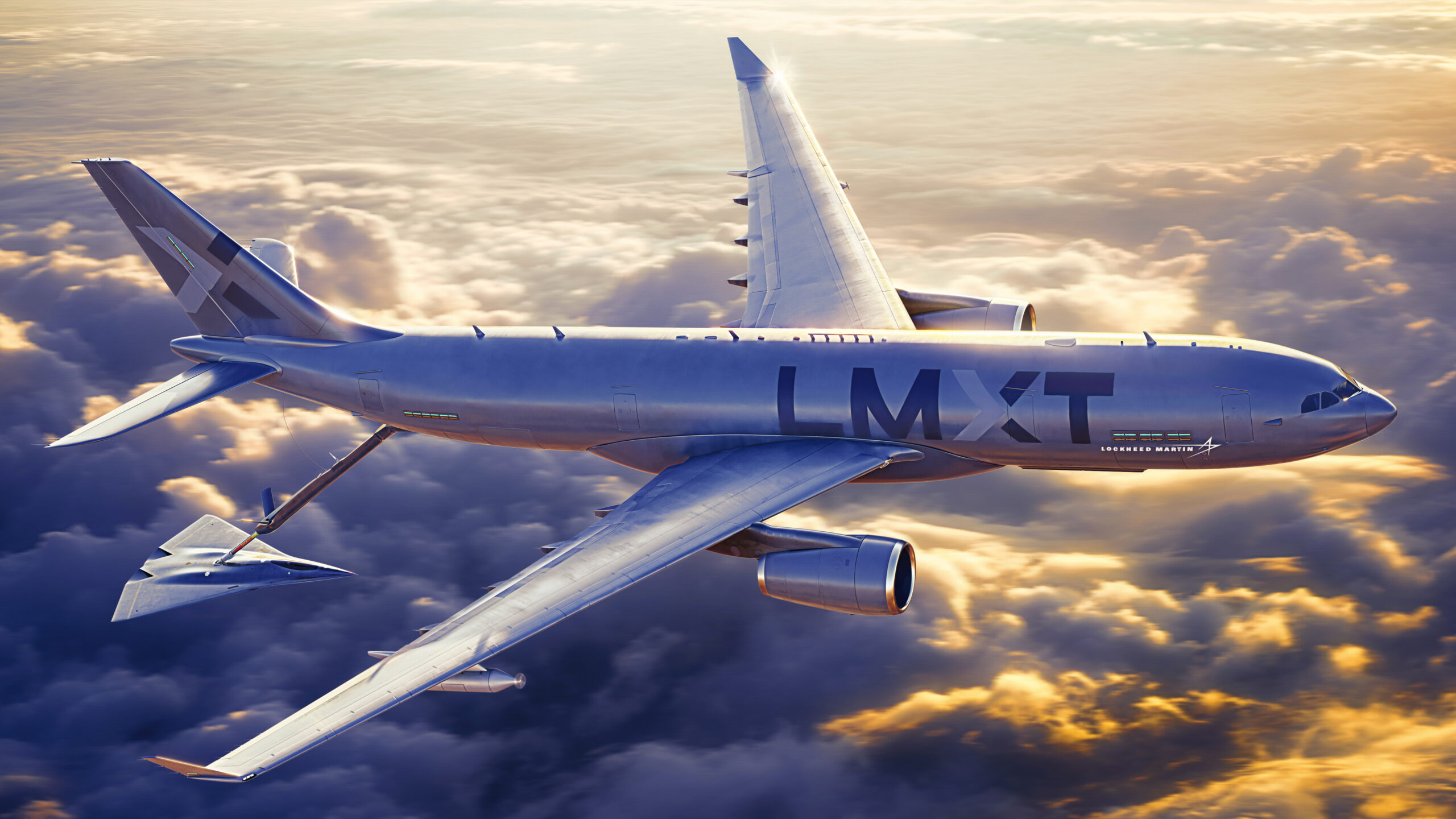
A rendering of the LMXT, an variant of the A330 Multi Role Tanker Transport proposed by Lockheed Martin and Airbus as a future tanker for the US Air Force. (Lockheed Martin)
WASHINGTON — This spring, the Air Force is set to decide whether Boeing’s KC-46 will face off against the Lockheed Martin LMXT for the KC-Y program. But even if the service skips a competition, Lockheed believes the LMXT has a shot in future tanker procurement efforts.
For more than a decade, the Air Force has planned to purchase a follow-on to the KC-46 known as KC-Y before embarking on a program to field a clean-sheet, next-generation tanker called KC-Z. However, service leaders — most significantly Air Force Secretary Frank Kendall — have hinted that the Air Force could forgo a KC-Y competition altogether and simply keep buying more KC-46s before starting a program for KC-Z.
Larry Gallogly, Lockheed’s LMXT campaign director, offered a third option the Air Force could potentially take if it decides to skip KC-Y and buy more KC-46s: Skip a brand-new design for KC-Z and instead consider the LMXT.
“If the [KC-Y] competition doesn’t go forward, I’m not convinced the next competition would be for a [clean sheet KC-Z]. They may just say, ‘Hey, we’re going to have a competition for the next-generation tanker and here’s we want it to do,” Gallogly said in a recent briefing with reporters. “When the secretary stresses the business case of this, we know that a clean-sheet development of a new tanker will be very expensive.”
RELATED: Lockheed unveils new tanker design, LMXT
Gallogly added that “[this] is a potential scenario that we see as very possible” due to conversations with the Air Force that he said indicated that the service could require a tanker with capabilities more advanced than what it currently is fielding, while not being in the realm of an even more high-tech, clean-sheet tanker.
“We see this airplane as already being in that KC-Y plus scenario,” Gallogly said. “It is already embodying next-generation technologies.”
In its briefings with reporters, Lockheed has characterized the LMXT as complementary to Boeing’s KC-46. The LMXT is a planned American derivative of Airbus’s A330 Multi Role Tanker Transport, which originally faced off against the KC-46 during the KC-X competition that was decided — after multiple protests — in Boeing’s favor in 2011.
To build the LMXT, a baseline A330 airliner would undergo final assembly in Mobile, Ala., before transferring to Marietta, Ga., where it would be modified into a militarized tanker. Because of the larger size of the A330, the LMXT would be able to offload 56,000 pounds more fuel and would have a longer combat radius than the KC-46 — a characteristic that would serve the aircraft well in the Indo-Pacific region, Gallogly said.
Lockheed has put forward a three-phase roadmap to incorporate new technologies meant to enable Joint All Domain Operations — the military’s concept for connecting previously stovepiped sensors and shooters. From now until 2027, Lockheed plans on adding connectivity with SpaceX’s Starlink satellite constellation and the Protected Tactical Waveform, gradually phasing in data fusion, machine learning and artificial intelligence capabilities, Gallogly said.
The company also plans on adding a command-and-control suite with workstations and avionics equipment for onboard battle managers. After those upgrades, the LMXT will be able to act as an airborne command center, capable of tasking drones and piloted aircraft and sending information on threats and targets.
“Information doesn’t have to go all the way back to some ground station in the United States, and then come back through the system to get to where it’s actionable. It can be done right there on the airplane where you do all of that collection, analyzing and dispersing the data to put weapons on a target,” Gallogly said. (Currently, the Air Force does not conduct this mission using tankers, and Gallogly acknowledged that it would be up to the service’s Air Combat Command to decide whether to station battle managers onboard the LMXT — not Air Mobility Command, which oversees the service’s tanker fleet.)
But all of that rests on whether the Air Force actually decides to move forward with a tanker competition — something Kendall said is in doubt if requirements for its next tanker did not deviate much from the specifications of the KC-46 it is currently purchasing from Boeing. “We actually have to have a demand for the other aircraft that’s being offered,” Kendall told lawmakers in April.
Paul Waugh, the Air Force’s program executive officer for mobility and training aircraft, told reporters in August that the Air Force plans to kick off a KC-Z analysis of alternatives in 2024, with preliminary work beginning next year — further adding to speculation that the service could skip a KC-Y competition and expedite the timeline for KC-Z.
RELATED: HASC won’t force the Air Force to hold a bridge tanker competition this year.
In the end, it will come down to exactly what the Air Force decides to require, and when.While Gallogly said the service may not pursue a KC-Y competition, the Air Force certainly will need something different from its current hauler in the near future.
“We’ve spoken to everybody including the folks that wrote the requirements, and while nobody would give us specific requirements that will be included or not included, they have all said the requirements are way different,” he said. “And if you if you look at what is important, and we look at the RFIs [requests for information] that the program office recently released to the competitors, we see that fuel offload is clearly a priority of theirs.”






















